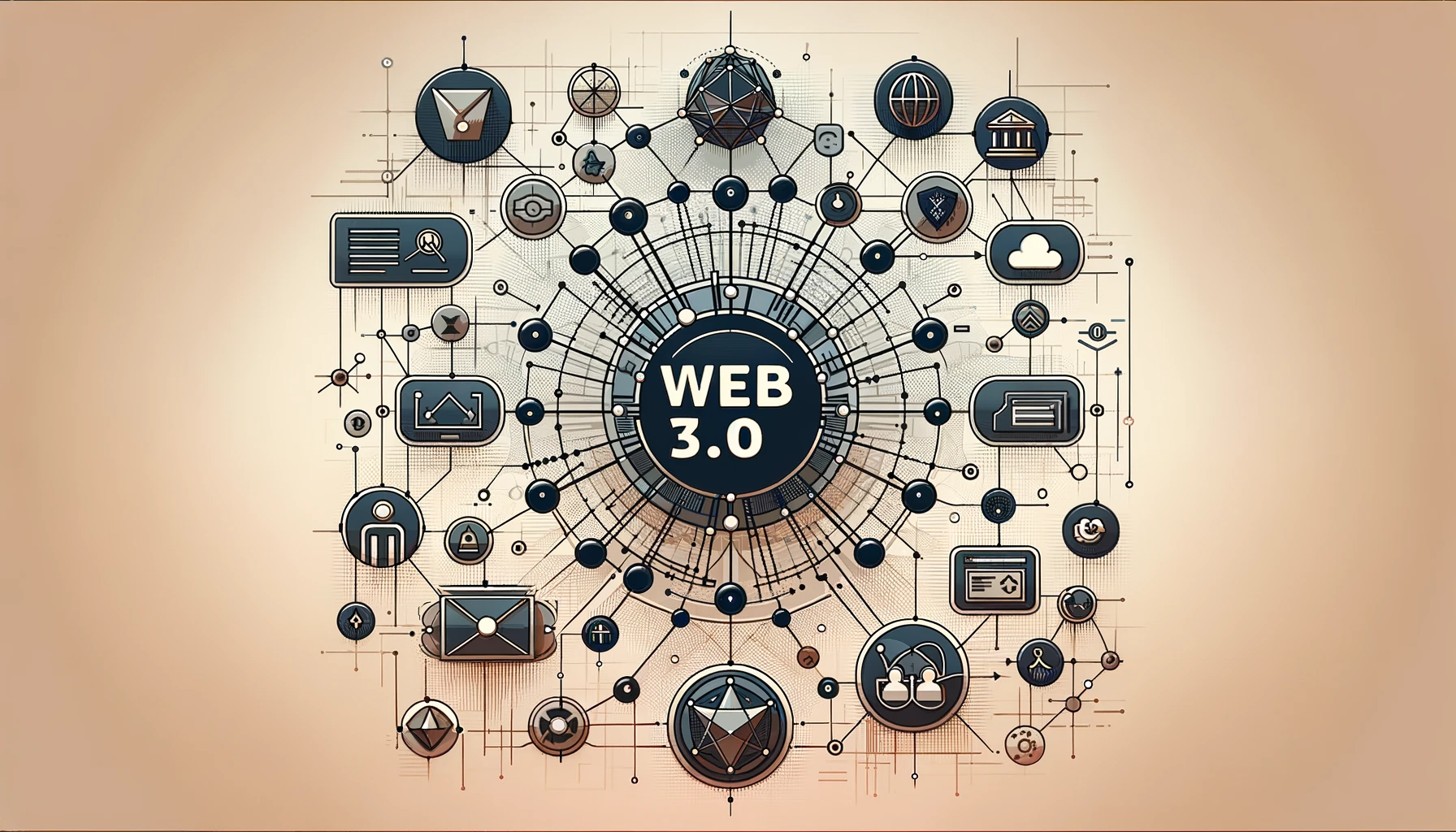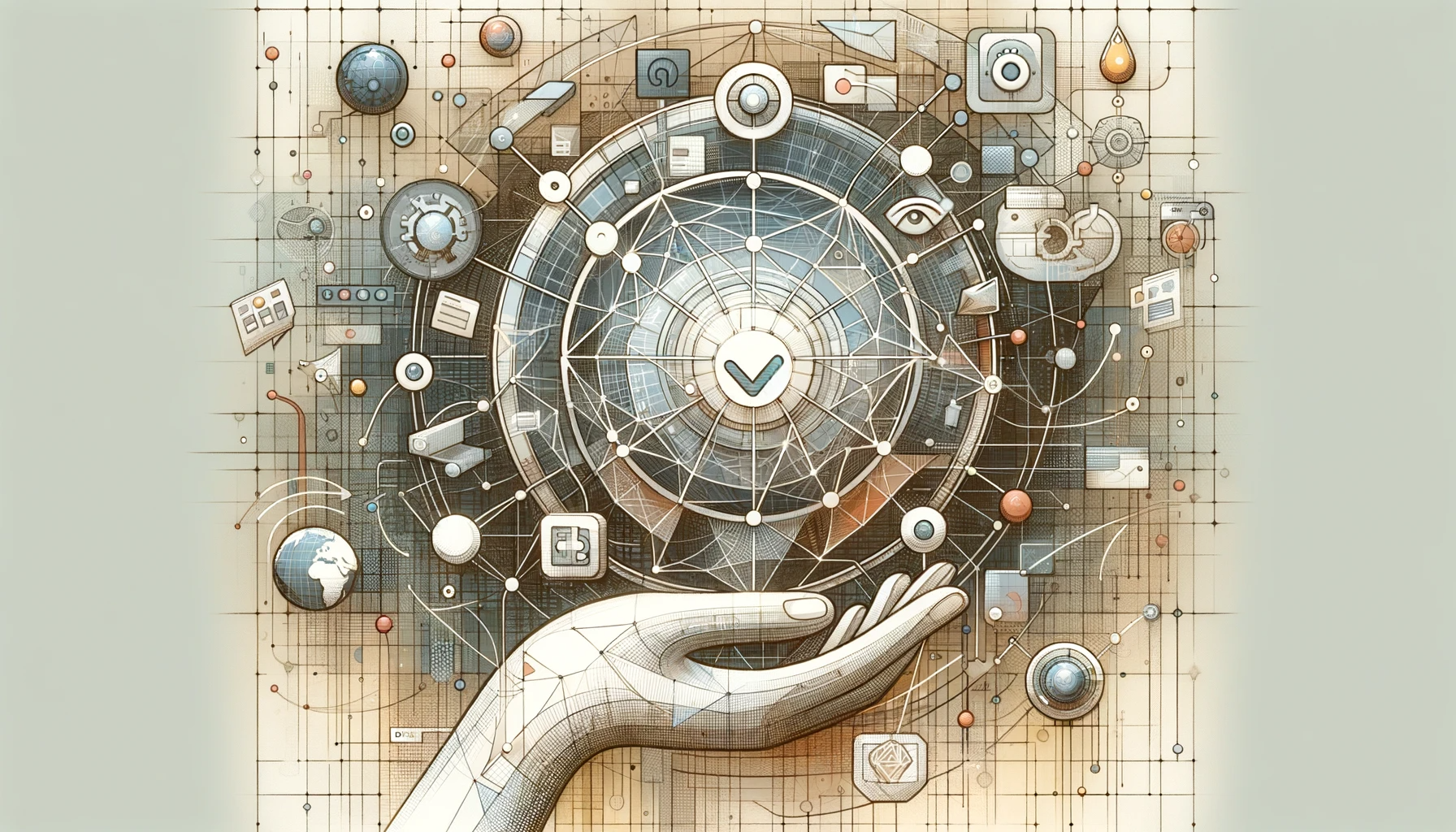Web 3.0 is a possible future version of the Internet that is based on public blockchains, a record-keeping system best known for simplifying cryptocurrency transactions. The appeal of Web 3.0 lies in its decentralization. This means that instead of consumers accessing the Internet through services, individuals themselves own and manage sections of the Internet.
Contents:
- The Evolution of the Web
- What is Web 3.0 in Crypto?
- What are the Properties of Web 3.0?
- How to Prepare Your Brand for the Web 3.0 Revolution?
- What are the Advantages of Web 3.0 Over its Predecessors?

Web 3.0 does not require "permission," which means that central authorities cannot decide who gets access to what services. And it does not require "trust," which means that an intermediary is not needed for virtual transactions between two or more parties.
Decentralized finance, often known as DeFi, is a component of Web 3.0 that is gaining momentum. This involves conducting real financial transactions on the blockchain without the help of banks or government. Meanwhile, many large corporations and venture capital firms are investing money in Web3, and it's hard to imagine that their involvement won't lead to some form of centralized control.
The Evolution of the Web
The World Wide Web is the main tool used by billions of people to exchange, read, and write information, as well as to communicate with others over the Internet. The Web has changed significantly over the years, and its current applications are almost unrecognizable from the beginning. The evolution of the web is often divided into three stages: web 1.0, web 2.0, and web 3.0.
What is Web 1.0?
The earliest version of the internet was known as Web 1.0.
Web 1.0 is a syntactic network, read-only accessible. Most participants were content consumers, while creators were mainly web developers who created websites with content presented mainly in text or graphic format. Web 1.0 existed approximately from 1991 to 2004.
Websites provided static content, not dynamic HyperText Markup Language (HTML) in Web 1.0. Data and content were delivered from a static file system, not from a database, and interaction on web pages was minimal.
What is Web 2.0?
Most users have only seen the Web in its current version, often known as Web 2.0, which is also known as an interactive network for reading and writing, plus a social network. You don't have to be a developer to participate in the content creation process in Web 2.0. Many applications are designed in such a way that everyone can become a content creator.
Web technologies such as HTML5 and JavaScript platforms allow companies to develop new ideas that give users a greater contribution to social life. As a result, developers only need to design a mechanism that involves and engages users, as Web 2.0 is built around them.
Think about how different well-known applications like Instagram, Twitter, LinkedIn, and YouTube were in the early days of their existence compared to what they are now.
All these companies undergo the following procedure:
| Step | Description |
|---|---|
| First | The company launches the application. |
| Second | As many people as possible are enrolled in it. |
| Third | The application makes money on its user base. |
Many companies initially don't care about monetization. Instead, they focus exclusively on expanding and retaining new consumers, but eventually, they need to start making a profit. When a company attracts venture capital to develop an application, its investors usually expect a return on investment of tens or hundreds of times.
The exploitation and centralization of user data are fundamental to the functioning of the Web. As a result, data breaches are a common occurrence in Web 2.0 applications. There are even websites dedicated to tracking data breaches and informing you of the hacking of your personal information.
You can't control your data or how it's stored in Web 2.0. In truth, companies often track and store user data without their permission. Furthermore, when governments believe that someone expresses an opinion that contradicts their propaganda, they often shut down servers or seize bank accounts. Governments can easily interfere, control, or close applications using centralized servers. Many of these drawbacks will be eliminated in Web 3.0.
What is Web 3.0?
Web 3.0, also known as the Semantic Web or read-write-execute, is an era (beginning from 2010) that hints at the future of the web. Artificial Intelligence (AI) and Machine Learning (ML) enable computers to analyze data in the same way humans do, which contributes to the intelligent creation and distribution of valuable content according to specific user needs.
There are several key differences between Web 2.0 and Web 3.0, but the basis of both is decentralization. Web 3.0 developers rarely create and deploy applications that operate on a single server or store data in one database (usually hosted and managed by a single cloud provider).
Instead, Web 3.0 applications are built on blockchains, decentralized networks of numerous peer nodes (servers), or their hybrid. These programs are known as decentralized applications (DApps), and you often hear this term in the Web 3.0 community. Network participants (developers) are rewarded for providing high-quality services to create a stable and secure decentralized network.

What is Web 3.0 in crypto?
When it comes to Web3, you will find that cryptocurrency is often mentioned. This is because many Web 3.0 protocols heavily rely on cryptocurrencies. Web 3 offers monetary incentives (tokens) to anyone who wants to help build, manage, contribute to, or improve one of the projects. Web 3.0 tokens are digital assets tied to the vision of creating a decentralized internet. These protocols can provide various services such as computing, bandwidth, storage, identification, hosting, and other online services that were previously provided by cloud providers.
People can make a living by participating in the protocol in various ways, both technical and non-technical. Service consumers typically pay for the use of the protocol in the same way they pay a cloud service provider, such as Amazon Web Services. As with many other forms of decentralization, unnecessary and often wasteful intermediaries are eliminated.
Additionally, Web 3.0 will rely heavily on non-fungible tokens (NFTs), digital currencies, and other blockchain objects. Reddit, for example, is trying to break into the world of Web 3 by developing a mechanism for using cryptocurrency tokens that allows users to actually control parts of the local communities they participate in.
The corporate version of the Web 3.0 idea, known as decentralized autonomous organizations (DAOs), uses tokens for more even distribution of ownership rights and decision-making.
What are the Properties of Web 3.0?
The transition from Web 2.0 to 3.0 is happening slowly and imperceptibly to the general public. Web3 applications look the same as 2.0 applications, but their server side is significantly different.
The future of Web 3.0 leads to universal applications that can be read and used by a wide range of devices and software types, making commercial and leisure activities more convenient.
Decentralization of data and the creation of a transparent and secure environment will become possible thanks to the development of technologies such as distributed ledgers and blockchain storages, which will challenge centralization, surveillance, and advertising used in Web 2.0.
In a decentralized network, people will be able to rightfully control their data, when decentralized infrastructure and application platforms replace centralized technology companies.
There are four properties of Web3 that define its complexities and subtleties:
- Semantic Web;
- 3D graphics;
- Artificial Intelligence;
- Presence in multiple places at once.
With the development of mobile devices and internet connectivity, the functioning of Web 3.0 will be available everywhere and at any time. The Internet will no longer be limited to your desktop computer, as it was with Web 1.0, or your smartphone, as it was with Web 2.0. It will be omnipotent.

How to Prepare Your Brand for the Web 3.0 Revolution?
The use of Spatial Web in the early stages, or Web3, has already begun. It's time for business leaders to understand what the next computing era will represent, how it will affect businesses, and how it will create new values as it develops.
In addition, people need to be ready to understand how some of the most established and experimental Web 3.0 business models will gain value in the coming years, by studying existing and practical Web 3.0 business models. Some of the approaches are listed in the sections below.
Issuing a Native Asset
These assets are necessary for network operation, and their value is determined by the security they provide, offering a sufficiently high incentive to honest miners. The costs to attackers of carrying out an attack increase with the price of the native asset, while additional security stimulates further demand for the currency, increasing its price and value.
Building a Network While Holding the Native Asset
Some of the first crypto-network companies pursued a single goal: to make their networks more profitable. The resulting business model can be characterized as "expanding one's own treasury of assets; creating an ecosystem". Blockstream, as one of the largest maintainers of Bitcoin Core, relies on its BTC balance to create value. Similarly, ConsenSys has grown to a thousand employees, creating key infrastructure for the Ethereum ecosystem (ETH), to increase the value of its owned ETH.
Payment Tokens
With the rise in token sales, a new wave of blockchain projects built their business models around payment tokens in networks, often forming two-sided marketplaces and requiring the use of their own token for all payments. According to assumptions, as the network economy grows, demand for the limited native payment token will increase, leading to an increase in the token's value.
Token Burning
Using tokens to create communities, corporations, and initiatives may not always directly transfer profit to token holders. For example, the idea of token buyback/burning has attracted significant interest as one of the aspects of Binance tokens (BNB) and MakerDAO (MKR). Owned tokens are bought back on the public market and burned as revenue comes into the project (through Binance trading fees and MakerDAO stability fees), leading to a reduction in token supply and an increase in price.
Speculation on Derivatives
The next generation of business models focused on creating financial infrastructure for native assets, including exchanges, depositories, and derivatives providers. All were created with one goal: to provide services to users who wanted to speculate on these risky assets. Since the underlying networks are open and permissionless, organizations like Coinbase cannot secure a monopolistic position by offering "exclusive access".

What are the Advantages of Web 3.0 Over its Predecessors?
Since intermediaries are no longer involved in Web 3.0, user data will no longer be controlled. This minimizes the likelihood of state or corporate censorship, as well as the effectiveness of "denial of service" (DoS) attacks.
More extensive data sets provide algorithms with more information for assessment as more and more products connect to the Internet. This will allow them to provide more accurate information, tailored to individual user requirements.
Customer service is critical for a positive user interaction on websites and web applications. However, many successful web firms are unable to scale their customer support operations due to high costs. Users can better interact with support services using intelligent chatbots, which can communicate with multiple consumers simultaneously, made possible by Web 3.0.



